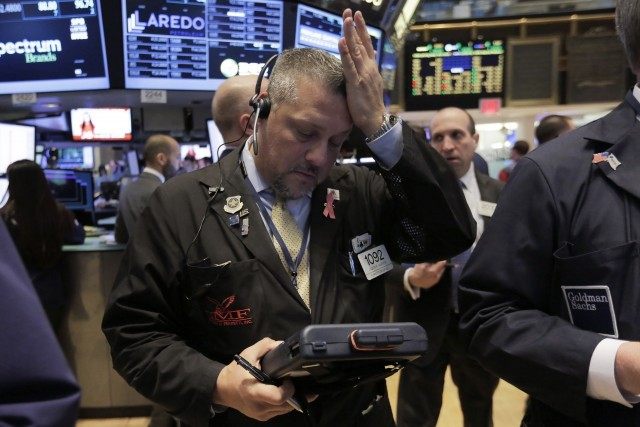Following Benchmark Capital partner Bill Gurley’s warning last week at the South-by-Southwest conference (SXSW) that “we are in a risk bubble”, Bloomberg, the Wall Street Journal and the New York Times all sounded the claxon horn Monday morning that New York hedge funds and mutual funds are flooding into late-stage venture capital-back tech companies in the futile hope of making a killing when the firms go public.
Although the media worry that this tsunami of cash is driving valuations up to the ludicrous levels seen just before the dot-com crash of 2000, it is already happening.
Hedge funds and mutual funds, just like individual investors, normally become wildly bullish on speculative investments just before market tops. The supposedly smart institutional investors are currently flocking into venture-backed deals and paying the nose-bleed valuations of 15-to-18 times projected sales for the year ahead. The figure is up from 10-to-12 times projected sales just five years ago for the priciest of companies.
Gurley’s warnings echo those in a Breitbart News article published two weeks ago, entitled “Marc Cuban doesn’t need an Apple Watch to Know When to Sell.” The Wall Street Journal has also created a list that now has 78 members in its “Billion Dollar Start Up Club” for receiving investment valuations of over $1 billion.
But Ben Narasin, the President of early-stage venture firm TriplePoint Ventures, and Jeremy Abelson, the Founder and portfolio manager of Irving Investors, have been worried about what they humorously warn can be high-stakes late-stage deals that can lead to “death of so-called “unicorn companies.”
Silicon Valley doesn’t “do dividends,” so all “liquidity event” rewards flowing to investors must come from initial public offerings. In an article at TechCrunch, Narasin and Abelson offer 3 metrics to measure whether venture investing in 2014 was in a bubble stage before its public offering:
- IPO “Down-rounds” = initial public offerings at lower valuations than previous private venture rounds. There were 44 out of 165 IPOs in 2014 that were down-rounds, a 57% jump over 2013’s 18 down-rounds;
- IPO “Price Premiums” = initial public offerings whose prices are above the valuation for last private venture investment. Although the premium was up an average of 161% in 2013, the IPO premium fell back to a 118% premium in 2014. About 27 percent of IPOs came at lower IPO pricings than their last private round for both 2013 and 2014.
- Investor Returns = from time of private investment up to six months after an IPO. The returns fell by -37 percent from +216 percent in 2013 to +137 percent in 2014.
Returns on “unicorns” are clearly declining, and many investments booked serious losses. Still, last year the averages were still sensationally profitable. That was especially true for the “Technology, Media and Telecommunications” sector, up 191 percent.
Silicon Valley blames this on “dumb New York money” crossing over into private venture rounds, using capital historically allocated to public stock portfolios, with hopes of better returns than the 5-to-7 percent returns possible in a low interest rate environment.
That may explain some of last year’s horrible “down-rounds” for New Relic, HortonWorks, and Box. The Internet retailer Fab.Com once had a private unicorn valuation of over a billion dollars, but now it only has a public market value of about $15 million.
Serena Saitto and Leslie Picker commented to Bloomberg that these down-round companies are representatives of the “risky outcome” of late-stage investing and the “disconnect between the valuations of [private] companies and publicly traded ones.”
Managing Partner Venky Ganesan at Menlo Ventures told SiliconValley.com, “Every top-tier venture firm is looking to go early and seed stage because those later stage rounds are just too large now.”
With the Silicon Valley locals avoiding late-stage venture deals for fear of “down-rounds.” It can’t be long before there will be nothing but “down rounds.”

COMMENTS
Please let us know if you're having issues with commenting.